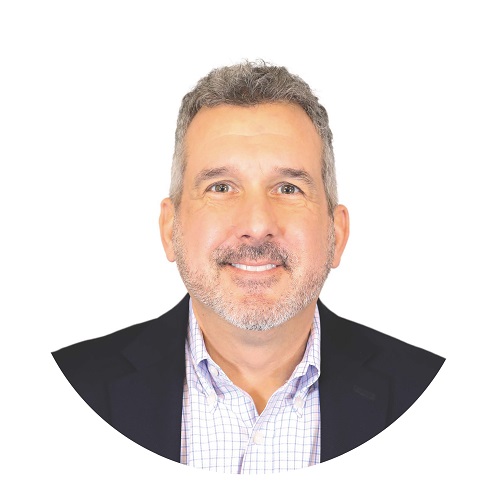Nursing and healthcare have seen substantial transformations over the last few years. These changes have highlighted the current trends and challenges in nursing education, reshaping how nurses are trained and prepared for their roles. Adapting to these trends and challenges is crucial, not just for nurse educators but for healthcare as an industry.

Understanding the Current Trends in Nursing Education
By 2030, the nursing profession will undergo significant transformations to meet the evolving needs of a diverse and aging population. As the American demographic landscape changes, nursing education must also adapt to prepare nurses for new challenges.
The Importance of Social Determinants of Health (SDOH)
Nursing schools must incorporate the understanding of social determinants of health (SDOH) into their curricula. These determinants include economic stability, education access, healthcare access, neighborhood environment, and social and community context. Nurses must be equipped to identify and address these factors, as they significantly impact patient health outcomes.
Expanding Community-Based Learning Experiences
To adequately prepare nurses, it is essential to provide expanded learning experiences within community settings. This approach ensures that nurses can work effectively with individuals from diverse backgrounds and life experiences. Practical exposure to varied community health scenarios helps nurses develop the competencies needed to deliver culturally sensitive and appropriate care.
Competency in Caring for an Aging and Diverse Population
The future nursing workforce must be skilled in caring for an increasingly aging population with complex health needs. Additionally, as America's population becomes more diverse, nurses must be trained to deliver care that respects and understands cultural differences. This requires an education system that emphasizes flexibility and adaptability in nursing roles.
Data Collection and Analysis
Healthcare is increasingly focusing on preventive medicine, which relies heavily on data collection and analysis to create quality measures. Nurses must acquire skills in data management to ensure they can contribute effectively to patient care.
Evolving Workplaces
Nurses are no longer confined to hospitals. They now work in diverse environments such as homes, research institutions, and even cruise ships. This evolution requires flexible and comprehensive training programs.
Lifelong Learning
With the rapid changes in healthcare, nurses must commit to lifelong learning. Continuous education is essential for nurses to stay updated with the latest trends and evidence-based practices.
Telehealth Integration
The rise of telehealth, accelerated by the pandemic, necessitates that nurses become proficient in virtual care. Understanding the nuances of telehealth is crucial for effective patient communication and care.
Online Education
The shortage of nurse educators and the flexibility of online learning have made virtual and hybrid educational models more popular. Advanced simulation technologies help nursing students transition smoothly into real healthcare environments.
Global Health and Disaster Preparedness
The pandemic has underscored the importance of preparing nurses for public health emergencies and community disasters. Nursing education now emphasizes training in disaster preparedness and response.
The Evolution of Nursing Education
The role of nurses has evolved significantly since the days of Florence Nightingale. Initially focused on patient hygiene and comfort, nursing education was informal and often bedside. Florence Nightingale revolutionized this by establishing formal nursing instruction.
Historical Progression
- Early Education: Early nursing education consisted of diploma programs that combined classroom instruction with hands-on experience in healthcare settings.
- Degree Programs: As medical technologies advanced, diploma programs evolved into associate and bachelor degree programs. These programs introduced specialized training to ensure nurses could handle various medical specialties.
- Advanced Practice Nursing: Nursing education now includes advanced practice roles, emphasizing professional development and lifelong learning to cater to the diverse responsibilities nurses hold today.
Challenges in Nursing Education
Despite advancements, nursing education faces several challenges that impact the quality of training and the readiness of new graduates.
Shortage of Nurse Educators
A critical challenge is the shortage of nurse educators. Many nurses prefer clinical roles due to higher salaries and less administrative work. Additionally, many educators are nearing retirement, limiting student admissions and exacerbating the nursing shortage.
Integrating Technology
Incorporating new technologies into nursing programs can be difficult due to cost and accessibility issues. Both students and educators may struggle with using these tools effectively.
Clinical Placements
Finding adequate clinical placements for nursing students is challenging. Limited clinical sites and competition from other healthcare programs make placements scarce.
Curriculum Updates
Nursing curriculums must continuously evolve to keep up with advancements in healthcare and technology. Ensuring educational programs are up-to-date with current literature and practices is crucial for producing competent nurses.
Social Media Impact
While social media can be a valuable resource for building communities and partnerships, it also poses risks such as misinformation and unprofessional shortcuts that could undermine nursing practice.
Addressing the Challenges
To overcome these challenges, collaboration between nursing schools, healthcare organizations, nurses, and policymakers is essential. Key interventions include:
Increasing Funding for Technology
More funding is needed for technologies that enhance nursing education, such as updated simulation labs and online educational programs. These advancements are crucial for modern training.
Bridging the Wage Gap
The salary of nurse educators should be comparable to clinical nurses to attract more professionals into teaching roles.
Reducing Teacher-to-Student Ratios
Smaller class sizes can improve the quality of learning and reduce burnout among nurse educators.
Minimizing Administrative Burden
Nurse educators should focus on teaching rather than administrative tasks. Additional staff should handle admissions and student counseling.
Offering Scholarships
Scholarships for nurses interested in education can spark interest in this specialty and make programs more affordable.
Forming Academic-Healthcare Partnerships
Partnerships between academic centers and healthcare systems can ensure consistent clinical placements and support the development of adjunct faculty training programs.
Impact on the Quality of Nursing Education
Addressing these trends and challenges directly influences the quality of nursing education. Updated curriculums and real-life learning experiences prepare nurses effectively for the complexities of modern healthcare. Continuous support for nurse educators and their participation in continuing education ensures the best possible training for nursing students.
Nursing education is at a crossroads, facing numerous challenges and changes. From shortages of educators and clinical placements to the integration of new technologies, the field must adapt to prepare students for the evolving healthcare landscape.

Joining PracticeMatch in 2021, Paul supports Client Sourcing's proactive recruiting model that generates a robust prospect pool, creates an effective and efficient recruiting experience and identifies key metrics to ensure optimal performance for the client. Paul has a commitment to learning, development and passion for building a team of recruiting professionals to leverage their national footprint which benefits its client organizations and their candidates. Prior to joining the PracticeMatch team, Paul served as Medical Staff Development Officer at University Hospitals, Lake Health Region in Cleveland, Ohio.